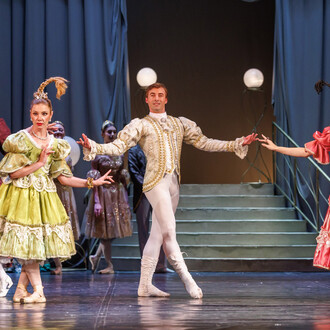The opening of an exhibition hall devoted to ceramics from the Far East represents for the International Museum of ceramics in Faenza the goal of a long lasting project in collaboration with the National Museum of Eastern Art “Giuseppe Tucci” in Rome. About 400 ceramics will be displayed in the new section, they represent the main centres of production of the Far East. These sites are symbols of the history of the international trade of porcelain since Marco Polo time up to the Eastern Indie Company which allowed Europe to appreciate and imitate the technique and art of potters from China, Japan, Thailand – the Ancient Siam – and Vietnam.
The exhibits allow the visitors to enjoy the wonderful goods arrived to Europe through the “porcelain route”, just like our ancestors. The production represent items from the main centre of Jingdezhen, in the Chinese area of Jiangxi, from the well-known kilns of Longquan in Zhejiang district. Representative are the porcelains – the famous “white and blue” vases – produced in Jingdezhen both for the refined Chinese market during the two last dynasties Ming (1368-1644) and Qing (1644-1911) and for the exportation towards Occident (the white and blue Kraak and Swatow particularly imitated in Delft and other countries) between 1550 and 1650, the period of more restricted monopoly of the Duch trade with the Eastern Indie. Beside them there are the excellent “white and blue” dishes made in Japan by the kilns of Arita, main centre of production of the archipelago that, in 17th and 18th century, was able to compete with China production. Always from Japan, Arita, are the porcelains Imari decorated with red and gold added to white and blue.
In the Japanese section there are extraordinarily refined stoneware potteries realized mostly in Seto, in the Isle of Kyushu, one of the “seven old kilns” of Japan active since the 12th century. There are also stoneware works glazed in several styles (among them the well-known raku cups red or black) used for the “Tea ceremony” or for sake
Of great interest there are the two 19th century porcelain Bencharong and Lai Nam Thong produced in Jingdezhen, in China, for the sole King of Siam Court, nowadays Thailand, which are richly decorated with coloured scene of Buddhist inspiration.
In the exhibition there are also items with religious subjects, not only made of ceramics, such as the exceptional statue in bronze representing the King Duo Wen Tianwang (the Man who hears everything) that welcome the visitors at the beginning of the hall.
The exposition through the “Porcelain route” is supported by informative panels for the enriching the visit.
The selection of works and scientific project was coordinated by professor Roberto Ciarla (National Museum of Eastern Art “Giuseppe Tucci”) in collaboration with Fiorella Rispoli (Italian Institute for Africa and Orient), Chiara Molinari, a young scholar collaborating with the MIC Foundation and with the staff of the Museum.















